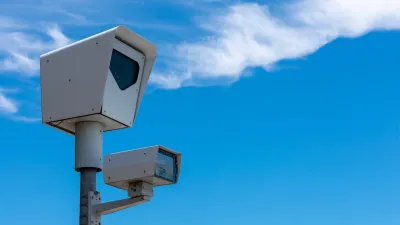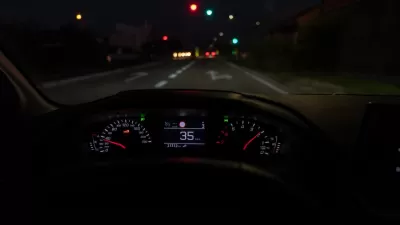The city's controversial traffic camera program tickets Black and Latino motorists more than white drivers. Infrastructure may play a role in why.

An investigation from ProPublica's Emily Hopkins and Melissa Sanchez reveals that Chicago's purportedly neutral traffic enforcement cameras issued citations to households in majority Black and Latino ZIP codes at a rate twice as high as in white neighborhoods. In 2020, when Black and Latino workers were more likely to keep going to work while many white workers worked from home, the ticketing rate in Black neighborhoods jumped to three times that of white areas. The traffic camera program monitors almost 300 locations distributed "roughly evenly" in the city's different neighborhoods. "The consequences have been especially punishing in Black neighborhoods, which have been hit with more than half a billion dollars in penalties over the last 15 years, contributing to thousands of vehicle impoundments, driver’s license suspensions and bankruptcies, according to ProPublica’s analysis."
Traffic camera programs in other cities, such as Rochester, Miami, and Washington, D.C., have shown similar disparities in ticketing, calling into question the supposed fairness of the devices, which have been touted by some supporters as a "race-neutral" way to reduce potentially violent police interactions. Chicago mayor Lori Lightfoot's policy chief, Dan Lurie, has said "the administration has been grappling with the 'twin challenges' of improving traffic safety while 'very intentionally ensuring that the burdens of fines and fees as a result of those kinds of efforts do not fall disproportionately on Black and brown residents.'" Lurie acknowledged the need to improve road infrastructure as part of the effort to reduce traffic fatalities and protect pedestrians.
While research shows traffic cameras can have a positive impact on driving behaviors, some critics call them a cash grab that disproportionately harms low-income residents. Instead, experts point to other traffic calming measures, such as medians and speed bumps, that can slow drivers.
The article details other factors that affect driver speeds and pedestrian safety, such as road width, residential density, and proximity to expressways—roads disproportionately built through historically Black neighborhoods.
FULL STORY: Chicago’s “Race-Neutral” Traffic Cameras Ticket Black and Latino Drivers the Most

Alabama: Trump Terminates Settlements for Black Communities Harmed By Raw Sewage
Trump deemed the landmark civil rights agreement “illegal DEI and environmental justice policy.”

Planetizen Federal Action Tracker
A weekly monitor of how Trump’s orders and actions are impacting planners and planning in America.

The 120 Year Old Tiny Home Villages That Sheltered San Francisco’s Earthquake Refugees
More than a century ago, San Francisco mobilized to house thousands of residents displaced by the 1906 earthquake. Could their strategy offer a model for the present?

Ken Jennings Launches Transit Web Series
The Jeopardy champ wants you to ride public transit.

BLM To Rescind Public Lands Rule
The change will downgrade conservation, once again putting federal land at risk for mining and other extractive uses.

Indy Neighborhood Group Builds Temporary Multi-Use Path
Community members, aided in part by funding from the city, repurposed a vehicle lane to create a protected bike and pedestrian path for the summer season.
Urban Design for Planners 1: Software Tools
This six-course series explores essential urban design concepts using open source software and equips planners with the tools they need to participate fully in the urban design process.
Planning for Universal Design
Learn the tools for implementing Universal Design in planning regulations.
Clanton & Associates, Inc.
Jessamine County Fiscal Court
Institute for Housing and Urban Development Studies (IHS)
City of Grandview
Harvard GSD Executive Education
Toledo-Lucas County Plan Commissions
Salt Lake City
NYU Wagner Graduate School of Public Service





























